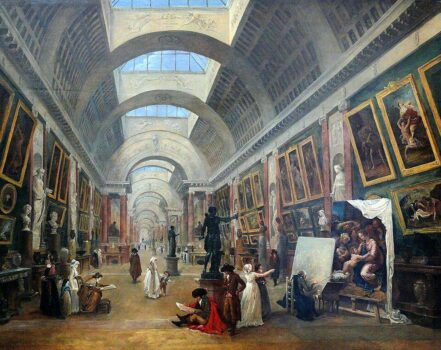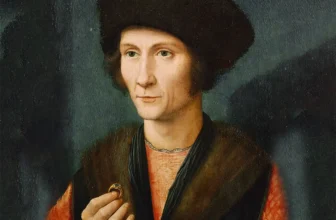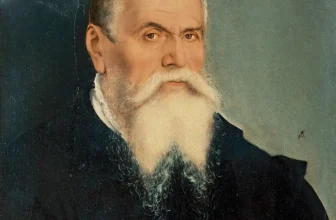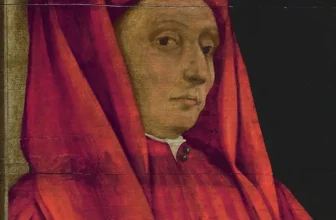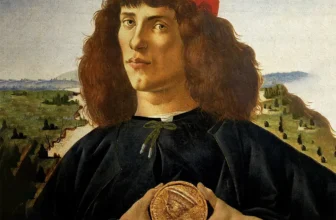The History of Oil Painting and the Legacy in Collecting
Shopping Ads: Invest in Hidden Masterpiece: Rare Antique Oil Paintings For Sale. Limited Originals Available 💰😊 Are you looking for authentic hidden masterpiece? Explore old master antique oil paintings from the Renaissance and Baroque eras. From 16th-century portraits to 18th-century landscapes. Authenticity guaranteed, Old Master antique oil paintings for sale. Shop Now! 🎨 Renaissance And Baroque Art Old Master Portrait Paintings Landscape Antique PaintingsOil painting is one of the most influential artistic mediums in the history of visual culture. From the luminous religious icons of the Renaissance to the expressive canvases of the modern era, oil paint has been the vehicle for some of the most celebrated artistic achievements in human history. Collectors, museums, and art enthusiasts continue to value oil paintings not only for their aesthetic qualities but also for their cultural, historical, and financial significance.
This topic will provide a comprehensive exploration of the history of oil painting, its evolution through different periods of art, the techniques that shaped its development, and its enduring legacy in art collecting. By the end, readers will have a clear understanding of why oil painting remains a cornerstone of fine art and a prized asset in private and institutional collections.
The Origins of Oil Painting
Early Experiments in Antiquity
Oil as a medium predates the European Renaissance, though its origins are somewhat obscure. Ancient civilizations used natural oils as binders for pigments, often for decorative or utilitarian purposes. Evidence suggests that oil-based paints were used as early as the 7th century CE in Afghanistan’s Bamiyan caves, where Buddhist murals contained pigments mixed with walnut and poppyseed oils.
These early instances were not yet the fully developed oil painting technique we know today, but they demonstrate that oil as a medium was not a European invention. Rather, it was a rediscovery and refinement of an ancient method.
The Shift from Tempera to Oil
During the Middle Ages in Europe, egg tempera was the dominant painting medium. Tempera created luminous but fast-drying images, which limited artists’ ability to blend colors or achieve subtle shading. Oil, in contrast, dried slowly, allowing for manipulation, layering, and rich tonal variation.
The transition from tempera to oil in Europe marked a revolution in artistic expression. Painters could create more lifelike figures, deeper shadows, and glowing highlights, lending their works an unprecedented sense of realism.
The Renaissance and the Rise of Oil Painting
Jan van Eyck and the Northern Renaissance
The true breakthrough for oil painting in Europe came in the 15th century with the Flemish master Jan van Eyck. Often credited with perfecting the oil medium, van Eyck used multiple translucent layers of oil glazes to achieve extraordinary depth, luminosity, and detail. His iconic works, such as the Arnolfini Portrait, display the precision, texture, and realism that became hallmarks of oil painting.
This innovation spread rapidly across Europe, influencing Italian Renaissance masters such as Leonardo da Vinci and Raphael, who saw the expressive potential of oil paint.
Italian Renaissance Masters
In Italy, artists adopted and refined oil techniques to suit their monumental religious and mythological works. Leonardo da Vinci’s Mona Lisa exemplifies the sfumato technique made possible by oil paints, where subtle gradations create soft, atmospheric transitions. Michelangelo, Titian, and Raphael further expanded the expressive possibilities, making oil painting central to High Renaissance art.
Oil painting thus became the medium of choice, enabling artists to achieve realism, texture, and emotional impact unmatched by tempera or fresco.
The Baroque and Beyond: Emotion and Drama in Oil
Caravaggio and the Power of Chiaroscuro
The 17th century ushered in the Baroque era, where oil painting became a stage for drama and emotion. Italian painter Caravaggio mastered chiaroscuro, the dramatic contrast between light and dark, to create theatrical compositions. His influence spread across Europe, inspiring artists such as Rembrandt in the Netherlands and Velázquez in Spain.
Dutch Golden Age
In the Netherlands, oil painting flourished in new ways. Artists like Rembrandt, Vermeer, and Frans Hals explored domestic interiors, portraits, and landscapes with extraordinary technical mastery. Rembrandt’s use of impasto, thick, textured brushstrokes, added depth and vitality, while Vermeer’s delicate handling of light created timeless masterpieces.
This era also reflected the growing role of private collectors. Wealthy Dutch merchants commissioned works, driving demand for portraits, still lifes, and everyday scenes. The Dutch Golden Age marked the beginning of oil painting as both an art form and a collectible asset.
The 18th and 19th Centuries: Romanticism, Realism, and Impressionism
Rococo and Romanticism
In the 18th century, oil painting took on lighter, playful, and decorative qualities in the Rococo movement. Artists like Fragonard and Boucher used pastel palettes and fluid brushstrokes to capture elegance and intimacy.
By the late 18th and early 19th centuries, Romantic painters such as Goya, Delacroix, and Turner harnessed oil’s expressive power to convey emotion, political turmoil, and sublime landscapes. The slow-drying medium allowed for expressive brushwork, blending, and experimentation with color.
Realism and Academic Painting
The 19th century also saw the rise of Realism, with artists like Courbet seeking to depict ordinary life with unidealized accuracy. Academic painters such as Bouguereau maintained classical traditions, producing highly polished canvases that showcased technical mastery.
These contrasting approaches demonstrated the versatility of oil painting, it could embody both radical truth-telling and refined idealism.
Impressionism and Innovation
Perhaps the most transformative 19th-century movement was Impressionism. Artists like Claude Monet, Pierre-Auguste Renoir, and Edgar Degas used loose brushwork, vibrant colors, and fleeting effects of light to capture moments in time.
Oil paint’s adaptability allowed Impressionists to paint outdoors (en plein air), taking advantage of new portable paint tubes. Their radical approach initially shocked critics but eventually transformed modern art and cemented oil painting as the primary medium for experimentation.
The 20th Century: Modernism and New Frontiers
Expressionism and Abstraction
The 20th century brought unprecedented innovation. Artists like Vincent van Gogh (transitioning from Post-Impressionism) used expressive brushwork and thick applications of oil paint to convey psychological depth. Later, Expressionist painters such as Edvard Munch and Ernst Ludwig Kirchner pushed oil paint toward emotional intensity and distortion.
Meanwhile, pioneers of abstraction like Wassily Kandinsky and Piet Mondrian demonstrated oil painting’s ability to transcend representation altogether, creating bold new visual languages.
Surrealism, Cubism, and Beyond
Movements like Cubism (Picasso and Braque) and Surrealism (Dalí and Magritte) further expanded oil painting’s possibilities. Oil’s versatility allowed artists to juxtapose forms, manipulate textures, and play with dreamlike imagery.
Even with the advent of photography and new media, oil painting retained its prestige as a fine art medium.
Contemporary Oil Painting
In the later 20th and early 21st centuries, oil painting coexists with digital, conceptual, and installation art. Yet contemporary painters like Gerhard Richter, Jenny Saville, and Cecily Brown continue to demonstrate that oil painting remains vital, capable of innovation, and deeply relevant in today’s art world.
Techniques That Define Oil Painting
To fully appreciate the legacy of oil painting in collecting, it is essential to understand its key techniques:
Glazing – Applying thin, transparent layers for luminosity.
Impasto – Thick, textured strokes that create depth.
Sfumato – Subtle transitions between tones, as seen in Leonardo’s works.
Alla Prima – Painting “all at once,” often used by Impressionists.
Chiaroscuro – Dramatic contrasts of light and dark.
These techniques give oil paintings their unmatched expressive range, ensuring their enduring appeal.
Oil Painting in the World of Collecting
Why Collectors Value Oil Paintings
Oil paintings have long been prized by collectors for several reasons:
Durability – Oil paint, when cared for, can last centuries without significant fading.
Aesthetic Quality – Rich colors, textures, and depth make oil paintings visually compelling.
Cultural Significance – Owning an oil painting connects collectors to art history.
Investment Potential – Masterpieces often appreciate in value, making oil a stable art investment.
Famous Collections and Institutions
Great museums like the Louvre, Prado, Metropolitan Museum of Art, and National Gallery are built around oil painting masterpieces. Private collectors from the Medici family to modern billionaires have assembled legendary collections that shaped art history.
The enduring demand for oil paintings ensures that auction houses like Christie’s and Sotheby’s regularly achieve record-breaking sales for Old Masters and modern icons alike.
Preservation and Restoration
Collectors and institutions also recognize the importance of preserving oil paintings. Conservation science continues to develop methods to stabilize, clean, and restore works without compromising their integrity. Proper care is essential to maintain both artistic and financial value.
The Legacy of Oil Painting in the 21st Century
Oil painting’s legacy is not simply historical, it continues to shape art and collecting today. Despite digital art, NFTs, and new media capturing headlines, oil paintings remain symbols of artistic mastery and cultural prestige.
Collectors often regard owning an oil painting as holding a tangible link to history and creativity. Contemporary artists push oil painting forward, ensuring it remains both traditional and innovative.
As long as human beings seek beauty, storytelling, and expression through visual art, oil painting will remain central to both artistic practice and art collecting.
The history of oil painting is a story of innovation, transformation, and enduring influence. From its early experiments in antiquity to its perfection in the Renaissance, from Baroque drama to Impressionist vibrancy, and from modernist abstraction to contemporary reinvention, oil painting has shaped the course of art history.
For collectors, oil paintings represent more than objects of beauty, they embody cultural milestones, personal expression, and lasting value. This legacy ensures that oil painting will remain a central pillar of fine art and collecting for generations to come.
